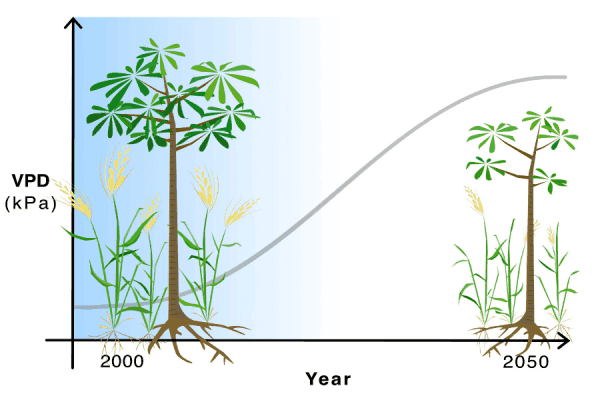A global observation of an ongoing atmospheric drying — known by scientists as a rise in vapor pressure deficit — has been observed worldwide since the early 2000s. In recent years, this concerning phenomenon has been on the rise, and is predicted to amplify even more in the coming decades as climate change intensifies.
In a new paper published in the journal Global Change Biology, research from the University of Minnesota and Western University in Ontario, Canada, outlines global atmospheric drying significantly reduces productivity of both crops and non-crop plants, even under well-watered conditions. The new findings were established on a large-scale analysis covering 50 years of research and 112 plant species.
“When there is a high vapor pressure deficit, our atmosphere pulls water from other sources: animals, plants, etc.,” said senior author Walid Sadok, an assistant professor in the Department of Agronomy and Plant Genetics at the University of Minnesota. “An increase in vapor pressure deficit places greater demand on the crop to use more water. In turn, this puts more pressure on farmers to ensure this demand for water is met — either via precipitation or irrigation —so that yields do not decrease.”
Read more at: University of Minnesota
Atmospheric drying (referred to as water vapor pressure deficit or VPD) is expected to increase as a result of climate change. This could reduce crop yields and make trees shorter. (Photo Credit: Maria H Park).


